#VCU
Explore tagged Tumblr posts
Text
something incredibly powerful is how healing these encampments as community spaces have been for so many. I’ve seen undergraduates get tutoring from graduate students, students who are food insecure receive three meals a day, students share their art and exchange gifts…. Seeing students put aside these typical structures of power aside has been incredibly fulfilling to watch. So many different people from many different backgrounds have learned from each other and exchanged their resources. I wish student protestors all over the US the very best. There is so much selflessness and passion in these spaces
#rambles#gaza#palestine#protests#ucla#ut austin#columbia university#indiana university#emory university#vcu#free palestine#university protests
2K notes
·
View notes
Text

1191
#original photography on tumblr#photographers on tumblr#artists on tumblr#rva#vcu#black and white photography
372 notes
·
View notes
Text

Quite old, but this was my 2021 cover for VCU's Emanata Comic Anthology, Volume 8: THE END. A personal pleasure and a great bookend since I had been a contributor and editor on the publication for all 4 years of my time at the school.
945 notes
·
View notes
Text
Police have begun pepperspraying, fighting, and detaining the peaceful pro-Palestinian student protesters on my campus. If possible, please donate to the RVA bail fund in order to help the arrested students.
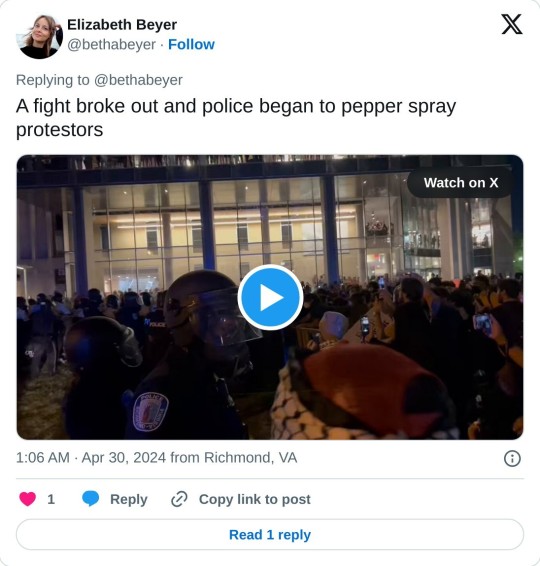
https://rvabailfund.org/donate
138 notes
·
View notes
Text
DON’T FORGET ABOUT VCU
Richmond police assaulted peaceful students at VCU on Monday April 29th, 2024. The students were granted permission by the university to protest. The protest officially started at 5PM EST outside of the Cabell Library, but several students started as early as 8 AM. They called it the Palestine Liberation Zone. Hundreds of VCU students attended.
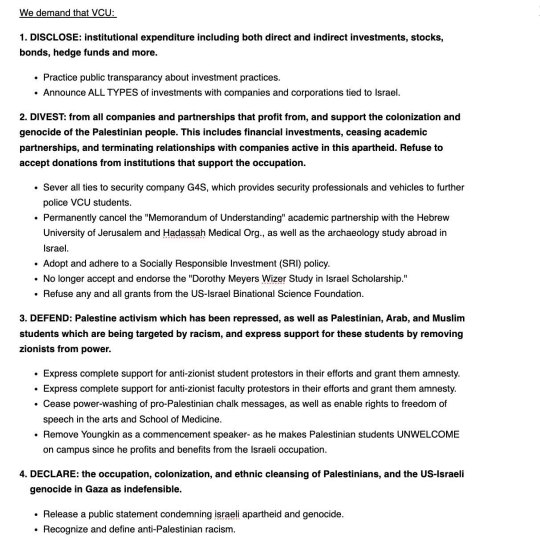
The protesters' list of demands from VCU. They were not going to leave until the University acquiesced.
At 8:30 PM EST, Richmond police arrived at the protest in full riot gear. The pallets you see were brought in by the students to protect the tents, and themselves, from police. The University called in the police.


At 9PM, the police were armed with riot shields and formed a wall against the students. Students used pallets, signs, and themselves to press back against officers. Some flung empty water bottles against them. One of the officers used pepper spray against the students. You can see several students in the windows in the library.

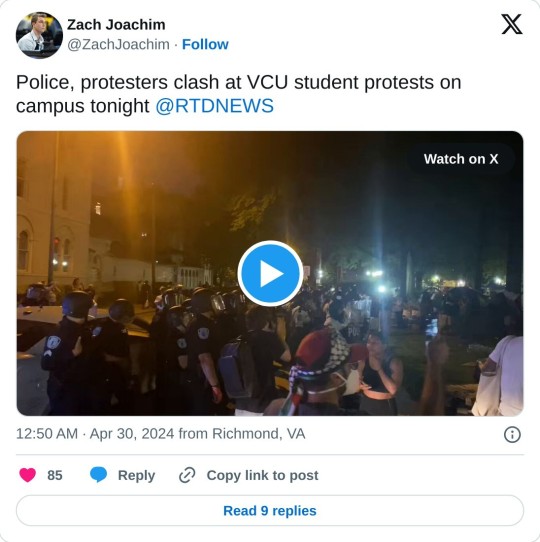
Another officer pepper spraying students and setting off a tear gas canister.

RPD are claiming that they did not use tear gas.
The police retreated and the students heckle and cheer in victory.

By 9:12 PM, the students were locked inside the library by police for their safety and to prevent any chemicals from entering the building. Here is a video from a student's POV inside of the Cabell Library.

A student being arrested.

Sanitation workers take away tents and anything that was left behind. Laptops, books and other school materials were thrown away in a dumpster or were destroyed. Several students say that officers were snacking on the food that was left behind.
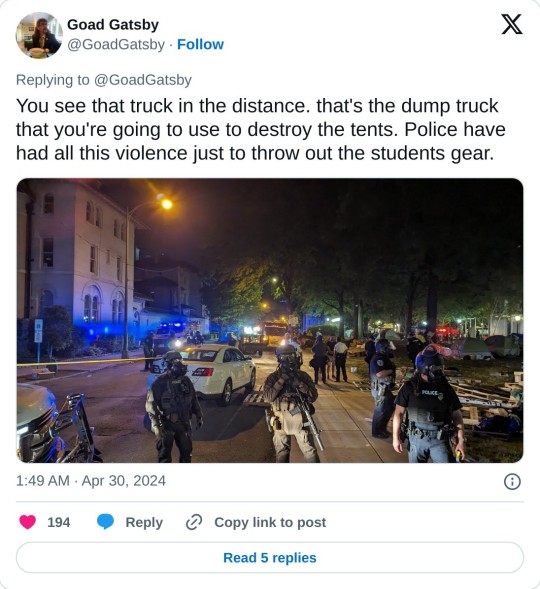
Past midnight, the organizers told the students to go home. The students in the library were officially let go after 4 hours of being stuck there. 13 arrests were made.
This is the University's response:

Is VCU providing safety to students in the form of riot police, pepper spray and tear gas? Almost all of the protesters were students of VCU, with maybe a handful of non-students joining in, according to a student who attends there. If the campus did not want disruption, they should not have given the green light to students protesting peacefully against genocide.
Here are several videos of the students being 'violent'



Sources: linked on twitter and a friend who attends VCU If any students or witnesses want to give more information, please feel free to comment or contact so I can update the post.
#palestine#free palestine#vcu#virginia commonwealth university#free gaza#current events#non sims#nonsims
37 notes
·
View notes
Text
I'm thinking of taking in fic requests...
I do want to actually start writing fics instead of just making plots and plots and plots ever since 10th grade (2019) and not actually putting in any work to make them into a fic
So this would be my first step I might take to get into writing...
Based on this I can know the scope of me as a writer (me framing tons and tons of plots doesn't count.)
So yeah. I'll start accepting requests
My asks is open y'all 👹👹👹
Fandoms :
Kpop :
Seventeen
Nct (all units minus the wishies, I'm getting to know them)
I can try for any other idols tho (like txt, ateez, skz, and bts)
Any other male idols are appreciated bcs i stan a ton of them, my ults number and the groups i read fics for isn't that high (I'm unfortunately straight </3)
Anime :
Blue lock
My hero academia
Tokyo revengers
Tokyo Ghoul
Chainsaw man
Jujutsu kaisen
Oshi no ko
Spy × family
Assassination classroom
Disastrous life of saiki k
Cool doji danshi
Hori San to miyamura kun
Mashle magic and muscles
You can ask me like headcanons or fluff or angst ig no smut bcs 0 practical experience 😇👍
(I love reading smut tho)
Underage characters will be aged up and I don't think I have a thing for dilfs so I might not be doing hcs for them too
#fic request#fics#kpop#anime#torev#mha#x reader#writeblr#svt#nct#blue lock#jjk#csm#tokyo ghoul#writers on tumblr#oshi no ko#assassination classroom#the disastrous life of saiki k.#mashle magic and muscles#horimiya#cool doji danshi#wayv#nct 127#nct dream#nct u#seventeen#hhu#pfu#vcu#hcs
15 notes
·
View notes
Text
so uh... my mom just scolded me for belting "habit" at the top of my lugs at midnight. sorry mama, peace ✌️ 😛
3 notes
·
View notes
Text
Dispatches From a Lost Commune: The VCU Liberated Zone
By Comrade Jeb | RMC DMV Smashed hands, burning skin, and a wall of riot shields eager to suck in any isolated militant they could get their bloody hands on. VCUPD, RPD, and Youngkin’s gun thugs the Virginia State Pigs rioted at a peaceful protest of ~100 students, faculty, and community members against the genocidal occupation of Palestine. They brutalized us, but we gave no easy victories. We…
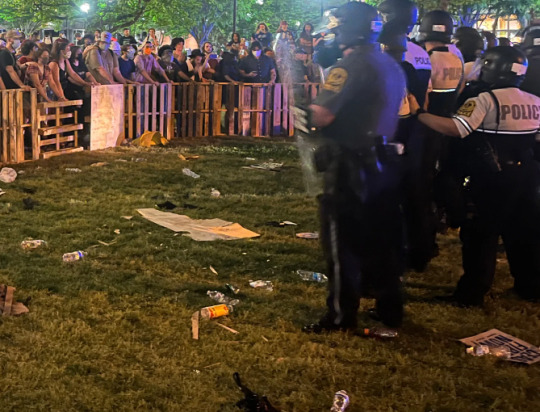
View On WordPress
4 notes
·
View notes
Text
Since Sony is so intent on building their Venomverse/Sinister Six, I had this idea that why don't we just have a Venomverse movie? An animated one similar to Spiderverse but with villains instead. So far in the first two Spiderverse movies, we've seen one version of each of the villains, imagine a whole army of them. Who needs 6 total when you can have 6 different versions of each?
It'd look and act a lot like Ultimate (as in, the game and comic, not the show) where we see things from Eddie's point of view, Venom wanting to take over every host he can and that young skinny maroon colored Spider-Man is there but as a semi-villain trying to stop Eddie and the villains.

In the comics, they like the gimmick that Venom takes over everyone. Everyone is Venom but they also like saying that Gwen is everyone (Gwenpool, Spider-Gwen, etc.) so she becomes the main opposition, building her own sort of host family (like Xehanort or something) and the two duke it out in a Civil War type battle but then Gwen gets exactly the upgrade she's wanted- Venom. Gwenom is the even match and final boss.
#venomverse#venom#marvel#spiderverse#idea#sony#hear me out#sony pictures animation#ultimate spider-man#vcu#gwenom#spider gwen
7 notes
·
View notes
Photo



Vans Chukka Mid VCU “White Suede”
#Vans#Vans Chukka#Chukka#Off The Wall#Vans Off The Wall#World Famous#Swag#Vans Style#VCU#Vans Classic#Vans Classics#2023#Photography#Sneakers#Vans Sneaker#Sneaker#Vans Sneakers
10 notes
·
View notes
Text
instagram
11 notes
·
View notes
Text

1041
#original photography on tumblr#photographers on tumblr#artists on tumblr#rva#VCU#black and white photography
203 notes
·
View notes
Photo



(via "VCU Rats" Sticker for Sale by Fawnadeer)
PLEASE REBLOG! IT HELPS A LOT!
5 notes
·
View notes
Photo

A spoonful of history helps the willow bark go down – VCU Magazine: For Alumni and Friends
5 notes
·
View notes
Text
Powertrain Component Modelling and Sizing
Introduction
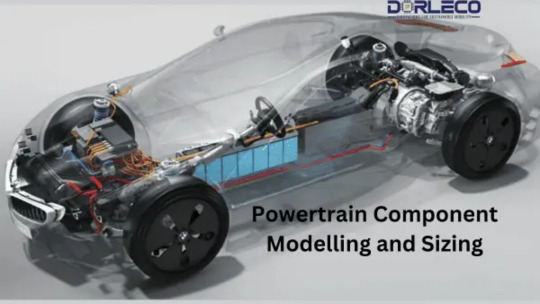
The dynamic automotive sector is depending more and more on virtual engineering and digital simulations to satisfy strict performance, efficiency, and regulatory requirements. The core of a vehicle’s design is the powertrain, which is the collection of elements that are accountable for generating and distributing power to the wheels. In order to achieve the best possible balance between performance, fuel efficiency, cost, and emissions, powertrain component modelling and size are crucial, regardless of the powertrain’s configuration — internal combustion engine (ICE), hybrid, or entirely electric. The systematic technique, advantages, difficulties, and prospects for powertrain component modelling and sizing in the automotive engineering process are all examined in this blog.
1. Understanding the Powertrain Component
Determining the vehicle’s intended use and performance goals is the first step in any powertrain development cycle. This fundamental stage lays the groundwork for component-level specifications and architectural choices.
Vehicle Type: EV, hybrid, commercial vehicle, sports car, or passenger car.
Performance metrics: include top speed, gradeability, towing capacity, and desired acceleration (0–100 km/h).
Compliance goals include safety regulations, fuel economy requirements, pollution regulations, and sustainability goals.
A thorough comprehension of these factors guarantees that the finished powertrain design complies with regulatory standards and market expectations.
2. Powertrain Architecture Selection
The type of vehicle and its intended use have an impact on the strategic choice of powerplant layout. Among the primary categories are:
Engine Internal Combustion (ICE)
Powertrain Hybrid (PHEV, HEV)
Electric Vehicles with Batteries (BEV)
Electric Vehicles using Fuel Cells (FCEV)
Core elements such the engine, electric motor, battery, gearbox, and control units must interact differently in each architecture. For downstream modelling, it is crucial to map the component interaction and energy flow paths at this point.
3. Modelling at the Component Level

Modelling engines
Modelling for ICE-based systems includes:
Creation of torque-speed curves
Mapping of fuel consumption
Emissions modelling and thermal behaviour
To model operating circumstances, assess combustion efficiency, and investigate transient responses, advanced programs such as GT-Power, AVL Cruise, or MATLAB/Simulink are used.
1.Modelling Transmissions
In this context, the gearbox connects wheel torque and engine power, while modelling helps determine:
Ideal gear ratios
Timing and logic for gear changing
Losses brought caused by inertia and friction
Reactivity and driveability
Single-speed gearboxes are frequently used in electric vehicles; nonetheless, efficiency and thermal considerations are still crucial.
2. Modelling Electric Motors and Batteries
In systems that are electrified:
Electric Motor: Efficiency mapping, torque-speed characteristics, inverter management, and the possibility of regenerative braking are all included in the simulations.
State of charge (SOC), voltage-current profiles, thermal performance, capacity decline, and charging/discharging behaviour are all included in the models of batteries.
Consequently, these components play a vital role in enabling accurate range estimation and supporting effective hybrid control schemes.
3. Control System Modelling
To that end, modern cars use intelligent control algorithms to regulate the flow of torque and energy. Key elements include:
Distribution of power in hybrid automobiles
Energy management systems for batteries (BMS)
Control of traction and stability
Regenerative braking and torque vectoring
Furthermore, control system modelling optimises real-time responses by ensuring smooth interaction between physical components.
4. Component sizing and optimisation
Each component is guaranteed to be neither overdesigned nor underutilised with proper dimensions. Engineers optimise variables like
Engine displacement and output torque
Maximum power and continuous motor rating
C-rate and battery capacity
Gear ratios for transmissions
The proper trade-offs between performance, efficiency, cost, and packing can be achieved with the aid of optimisation technologies (such as genetic algorithms and experiment design).
5. Compatibility and System Integration
The powertrain must function as a cohesive system in addition to its individual performance. Important integration factors consist of:
Thermal control of the battery, inverter, and engine.
Packaging and weight distribution to maintain vehicle dynamics
Features of NVH (Noise, Vibration, Harshness)
Compatibility of mechanical and electrical interfaces
Therefore, ignoring these elements may lead to inefficiencies, reliability issues, or dissatisfied clients.
6. Performance Validation Through Simulation
Subsequently, once components are designed and scaled, system-level simulations are conducted to validate the full powertrain component across real-world scenarios.
Urban driving cycles, such as the FTP-75 and WLTP
Profiles of highway loads
Simulations of hill climbing or towing
Conditions for idle-stop and regenerative braking
Engineers can create control methods and identify bottlenecks early in the process with the help of simulation technologies (such as MATLAB, dSPACE, and IPG Carmaker).
7. Physical Testing and Prototyping
Although simulation offers a theoretical starting point, physical testing is still necessary:
Prototype vehicle builds
Engine test beds and dynamometers for the chassis
Tests of endurance and durability
Prior to mass production, these tests ensure system robustness by validating predictions and identifying unforeseen mechanical, thermal, or ergonomic concerns.
8. Cost Analysis and Compromises
Additionally, a high-performance Powertrain Component needs to be profitable. Cost modelling includes:
Complexity of manufacturing and material selection
Tooling expenses and supplier availability
Implications for warranty and maintenance
In addition, simulations help identify cost-effective solutions without sacrificing critical performance parameters.
9. Iterative Refinement
In practice, the development process is rarely linear; instead, several design iterations are driven by insights gained from simulation, testing, and consumer feedback.
Modifying component specifications
Control logic revision
Power split or thermal load rebalancing
Consequently, this iterative loop ensures that the end product is optimised on all fronts — performance, cost, durability, and regulatory compliance.
10. Records and Adherence
As a result, this iterative loop not only streamlines development but also ensures that the end product is optimised on all fronts — performance, cost, durability, and regulatory compliance.
Logs from simulations and technical reports
Design specifications and the bill of materials
Safety requirements and emissions certifications
Design decision traceability
Proof of due diligence throughout the development process is necessary to comply with international rules (such as those set forth by the EPA, CARB, and UNECE).
Benefits of Powertrain Component Modelling and Sizing:

✔ Performance Enhancement
Fine-tuning for certain objectives, such as high torque, quick acceleration, or fuel economy, is possible through simulation.
✔Enhanced Productivity
Appropriate size improves energy efficiency on both ICE and EV platforms by preventing overdesign and lowering internal losses.
✔ Saving Money
Furthermore, by avoiding needless overspecification, manufacturers can effectively reduce manufacturing and material costs without compromising quality.
✔ Emissions Management
As a result of precise engine mapping and electric system optimisation, CO₂ and NOₓ emissions are significantly reduced.
✔ Predictive Knowledge
Prior to costly tooling and prototyping, simulations identify possible failure areas or inefficiencies.
✔ Personalisation
The architecture and Powertrain Component flexibility made possible by early modelling is advantageous for a variety of vehicle types, including haul trucks and two-wheelers.
✔ Superior Energy Organisation
Reliability and range are directly impacted by efficient battery and power management systems, particularly in EVs and hybrids.
✔ Reduced Market Time
Virtual iterations make faster development cycles possible as opposed to conventional build-and-test loops.
✔ Dependability
Moreover, stress analysis and thermal modelling ensure durability, which in turn lowers warranty claims and enhances brand recognition.
✔ Attention to Regulations
By ensuring early compliance with international safety and emissions standards, manufacturers can significantly reduce the need for costly redesigns later in the development cycle.
Difficulties with Powertrain Component Sizing and Modelling

Despite its strength, this strategy has drawbacks: Model Complexity: It takes knowledge and computing power to accurately simulate multi physics systems. Data Reliability: Reliable input data is necessary for model accuracy, which frequently necessitates rigorous physical testing for calibration. Integration Difficulties: Maintaining balance between electrical, mechanical, and control systems is difficult. Dynamic Operation Limits: Unexpected real-world circumstances are not always taken into account by models. Cost of Software Tools: Smaller businesses cannot afford the sophisticated simulation suites. Rapid Technological Changes: As EVs advance quickly, current models may become outdated. Real-World Parameter Uncertainty: It is challenging to accurately forecast traffic, temperature, and driver behaviour.
Conclusion
At the forefront of contemporary vehicle engineering is the modelling and sizing of powertrain components. In a cutthroat market, they enable automakers and suppliers to create vehicles that are effective, legal, and perform well. Engineers may unlock better ideas while cutting down on time, expense, and environmental effect by combining virtual simulations with actual testing. Modelling techniques will only become more crucial as the sector continues its transition to electrification and autonomous systems. Experts anticipate that future developments in digital twins, AI-driven simulations, and cloud-based co-simulation platforms will further push the limits of accuracy and effectiveness. Powertrain modelling and sizing are essentially strategic enablers of innovation, performance, and sustainability in mobility when used with insight and rigour.
#Dorleco#EVEngineering#PowertrainModelling#AutomotiveInnovation#VCU#CANDisplay#BatteryManagement#SimulationDrivenDesign#ElectricVehicles#MobilitySolutions#FutureOfTransport#EngineeringExcellence#DigitalEngineering
0 notes
